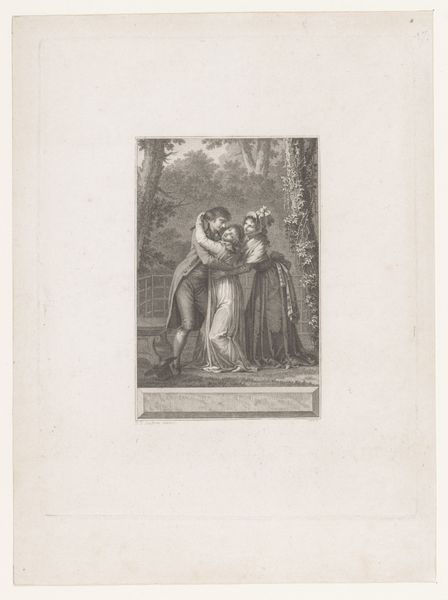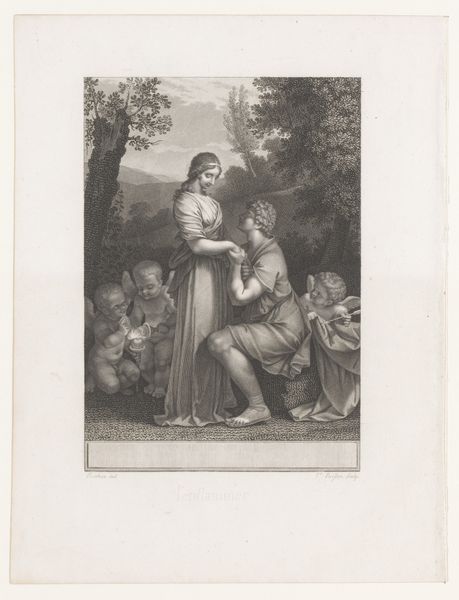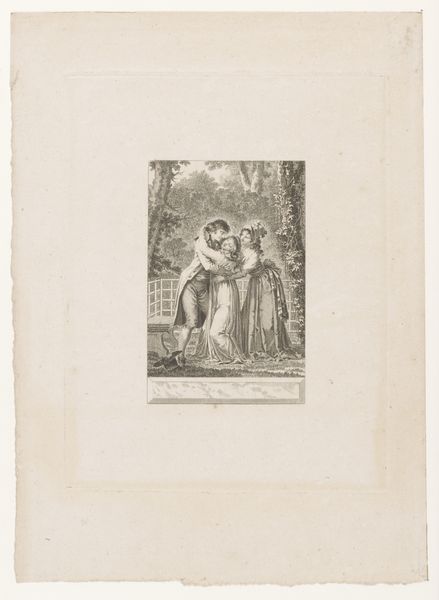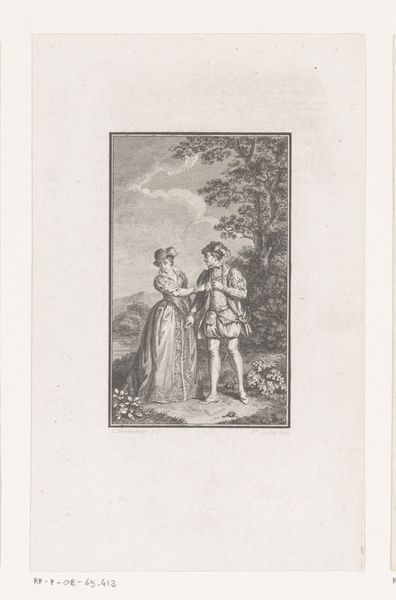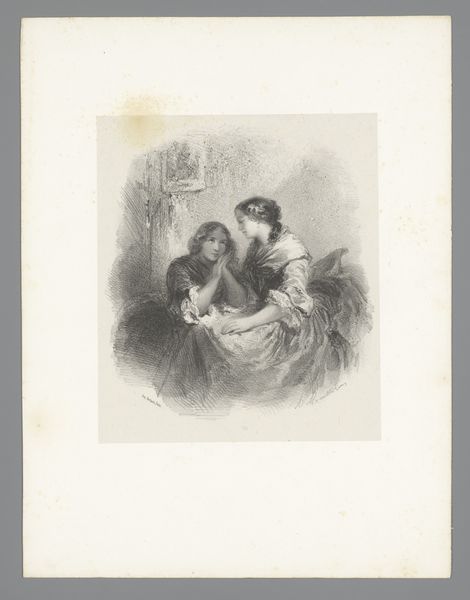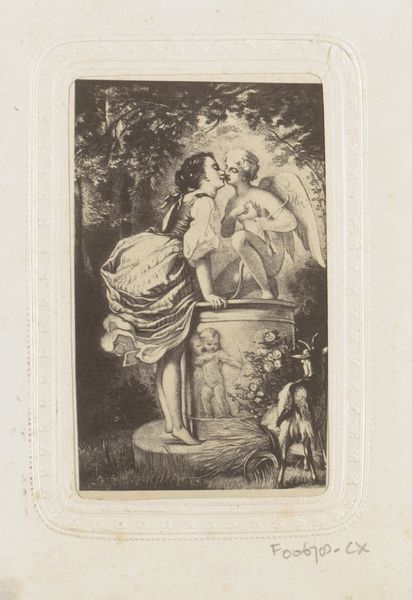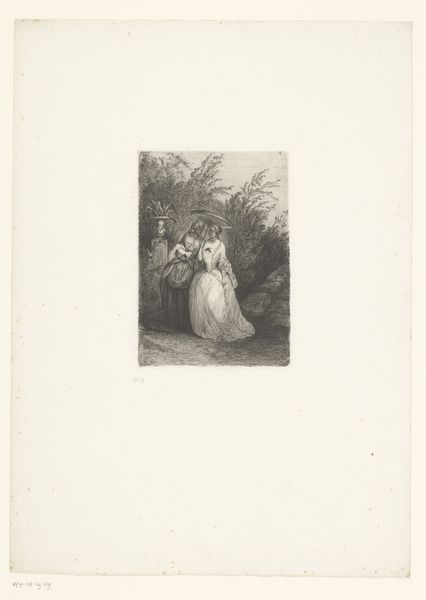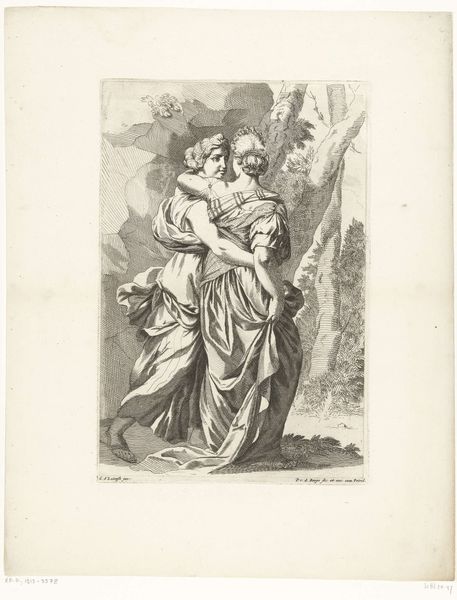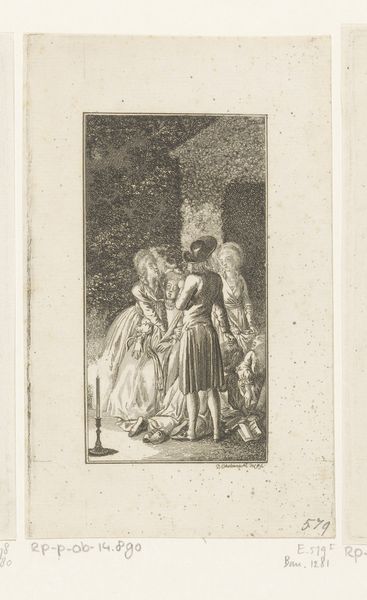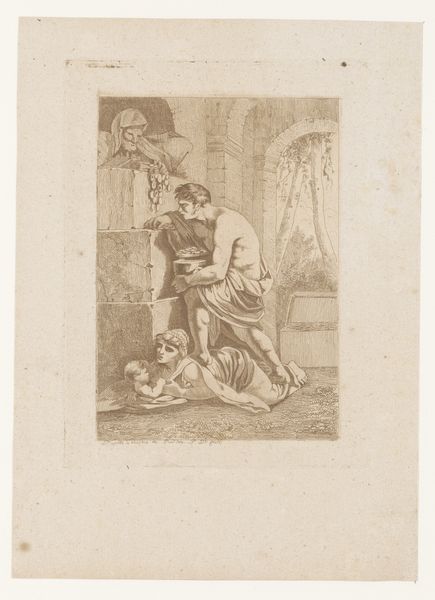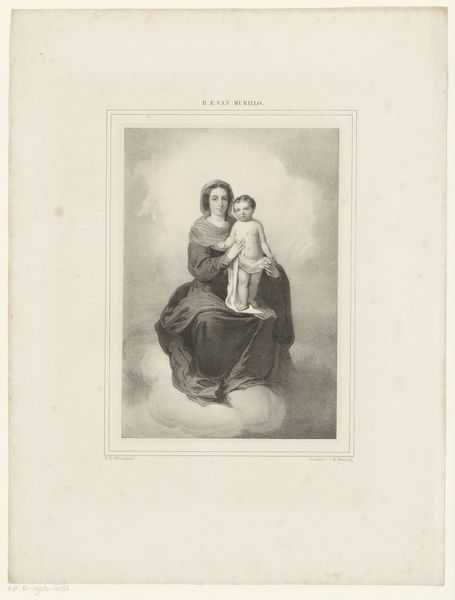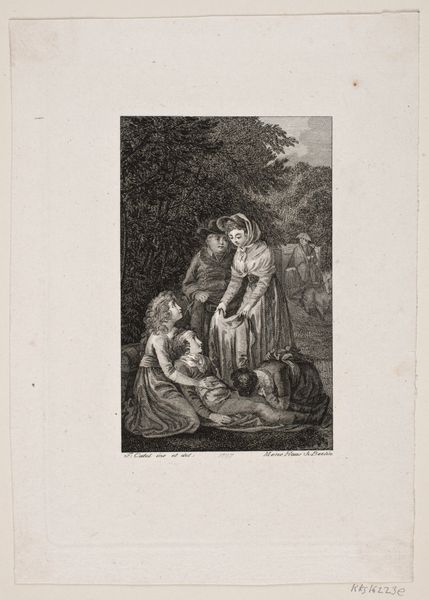
Dimensions: height 386 mm, width 290 mm
Copyright: Rijks Museum: Open Domain
Curator: This is an engraving by E. Burney, dating from approximately 1840 to 1900, entitled "Eerste kus van Julie en Saint-Preux" – which translates to "The First Kiss of Julie and Saint-Preux." Editor: It has such a dramatic flair, doesn’t it? The swooning woman, the passionate embrace… and what’s her friend doing, exactly? The stark tonal range certainly enhances that emotional intensity. Curator: Precisely. It's illustrative of the Romantic movement's interest in intense emotions and narrative scenes. "Julie, or the New Heloise," Rousseau's epistolary novel, was a cultural sensation, influencing attitudes toward love, sensibility, and even politics in the late 18th and early 19th centuries. Editor: The composition leads my eye directly to the couple; Burney employs light to heighten the drama. What about the framing? The figures are placed against a meticulously engraved landscape, adding a picturesque dimension to their tryst. Curator: That setting provides context. The walled garden could represent the constraints on their love. Julie’s arranged marriage features as the context of much internal struggle throughout the story and her attempts to suppress natural, powerful feelings. Editor: The way her companion observes adds to the ambiguity. She’s right there in the thick of it, as another embrace visually mirrors the main subjects, almost offering sanction. There’s almost a theatrical, tableau-like quality about it all. Curator: Absolutely. Genre paintings and narrative art during that period often aimed to educate viewers on moral principles. Here we observe class tensions in a relationship between tutor and student. The original readers of Rousseau certainly engaged with the print as an invitation for discussing and engaging with the text. Editor: It truly captures a potent moment. The contrasts in shading create volume but also communicate tension as much as the staging does. Thanks for bringing that important literary history into focus! Curator: It's important to note that its historical context continues to resonate when examining relationships depicted in art today.
Comments
No comments
Be the first to comment and join the conversation on the ultimate creative platform.
